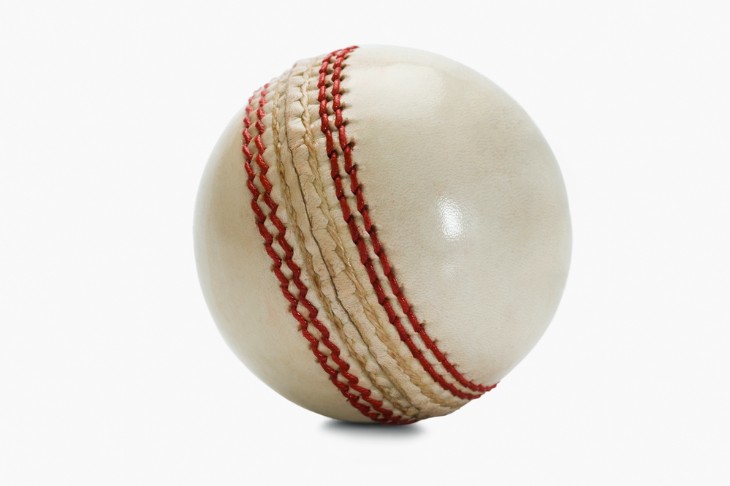What is White Ball Cricket? This question stands as a pivotal query that unravels a thrilling chapter in the sport's evolution. White Ball Cricket signifies more than just a colour change; it embodies a high-octane, limited-overs format that pulsates with intensity, strategy, and global resonance. This variant, characterized by its use of a white ball and a fervent pace, has carved its niche, captivating audiences worldwide with its aggressive gameplay and strategic intricacies. Delving deeper into the essence of White Ball Cricket unveils a tapestry woven with innovation, fervour, and a compelling narrative that resonates across continents.
Understanding White Ball Cricket
White Ball Cricket represents a streamlined, high-energy variant of the sport, played with a white cricket ball. Unlike traditional red ball cricket, this format predominantly consists of One Day Internationals (ODIs) and T20 matches. The primary distinction lies in the limited overs, fostering a more aggressive and time-bound gameplay where teams aim to maximize runs within a set number of overs.
The format’s name derives from the colour of the ball used, aiding visibility under artificial lights and ensuring better contrast against the players' attire, commonly sporting coloured jerseys.
The Equipment: Unveiling the Components Used in White Ball Cricket
White Ball Cricket employs specialized equipment tailored for the shorter format. The cricket ball used is typically made of white leather, facilitating enhanced visibility under various light conditions, especially during night matches or games played under floodlights. Additionally, players use coloured clothing, distinct from the traditional white attire seen in test matches, to ensure better visibility and differentiation between teams.
The Format: Exploring the Rules and Regulations
In White Ball Cricket, the format revolves around limited overs, typically 50 overs per side in ODIs and 20 overs per side in T20 matches. This restriction necessitates strategic gameplay, balancing aggressive batting to score runs swiftly against calculated bowling and fielding manoeuvres to restrict opponents within the given overs.
The shorter format prompts an intense, fast-paced game, demanding quick decision-making, and adaptability from players to capitalize on opportunities within a limited timeframe.
Variants: Different Formats within White Ball Cricket (ODIs, T20s, etc.)
White Ball Cricket comprises multiple variants, predominantly One Day Internationals (ODIs) and Twenty20 (T20) matches. ODIs involve each team batting and bowling for a fixed number of overs, while T20s condense the game further, fostering even more aggressive and explosive gameplay within a shorter timeframe.
T20 cricket, particularly, has gained immense popularity due to its entertainment value, often attracting larger audiences and engaging viewers with its rapid pace and thrilling moments.

Historical Context and Evolution
The emergence of White Ball Cricket traces back to the mid-20th century when cricket authorities sought ways to introduce a shorter, more spectator-friendly version of the game. The need for a condensed format led to experiments with limited overs, eventually giving rise to One Day Internationals (ODIs) in the early 1970s.
The inaugural ODI, played between England and Australia in 1971, marked a significant shift in cricket, paving the way for the evolution of White Ball Cricket as a standalone format.
Milestones and Landmarks: Key Moments in the History of White Ball Cricket
Several seminal moments have shaped the evolution of White Ball Cricket. The 1975 Cricket World Cup, the first-ever ODI World Cup, served as a watershed moment, amplifying the format's global appeal. Subsequent World Cups and bilateral series played pivotal roles in popularizing and refining White Ball Cricket, witnessing iconic performances and groundbreaking strategies.
The introduction and subsequent success of the Twenty20 (T20) format in the early 2000s further revolutionized the sport, adding an even shorter, more dynamic version of the game to cricket's repertoire.
The Impact of Technology: How Advances Have Altered the Game
Technological advancements have significantly impacted White Ball Cricket. Innovations such as white cricket balls, floodlights, and improvements in pitch and ground maintenance have enhanced the playing conditions, especially in day-night matches.
Additionally, the advent of Decision Review System (DRS) technology, enabling teams to challenge on-field decisions, has added a layer of precision and fairness to the game, altering the dynamics of crucial moments within matches.
Evolutionary Trends: Anticipating Changes in the Game
Looking ahead, the evolution of White Ball Cricket appears poised for further transformation. The integration of advanced analytics, wearable technology for players, and continued innovations in equipment are expected to redefine strategies and player performance.
Moreover, the globalization of the sport, with leagues like the Indian Premier League (IPL) and other T20 tournaments, continues to draw talent from diverse cricketing nations, contributing to the format's evolution and expanding its reach worldwide.
Key Players and Strategies
Star Players: Notable Icons Who Excel in White Ball Cricket
White Ball Cricket boasts a galaxy of stars, each leaving an indelible mark on the sport. Players like Virat Kohli, AB de Villiers, Rohit Sharma, David Warner, and Eoin Morgan have exemplified mastery in adapting their game to the demands of limited-overs cricket. These cricketers have showcased remarkable consistency, innovative stroke play, and the ability to accelerate the scoring rate, making them standout performers in this format.
Strategies and Tactics: Unveiling the Approach in White Ball Cricket
Strategies in White Ball Cricket revolve around a delicate balance between aggressive batting, calculated bowling, and astute field placements. Batting teams often prioritize a brisk start, relying on power-hitting and quick running between wickets to set a challenging total within the stipulated overs. Innovations like the use of the 'powerplay' overs in ODIs and T20s amplify this approach, emphasizing aggressive intent in the initial phase of the innings.
Bowling strategies entail a blend of pace variations, deceptive deliveries, and astute fielding placements to contain the opposition's scoring rate. The advent of specialist bowlers excelling in death overs—delivering precise yorkers or deceptive slower balls—has become a crucial facet of successful bowling strategies.
Teams also strategize field placements and tactical changes based on the match situation, exploiting weaknesses in the opposition lineup and capitalizing on crucial moments to seize momentum.
Statistical Analysis: Examining Trends and Patterns in the Game
Statistical analysis plays a pivotal role in deciphering trends and patterns in White Ball Cricket. Metrics such as strike rates, economy rates, dot ball percentages, and boundary frequencies provide insights into player and team performance. These statistics aid in devising strategies and identifying player strengths, weaknesses, and optimal batting and bowling combinations tailored to specific match conditions.
Moreover, analytics-driven approaches in team selection, game plans, and situational tactics have become instrumental in shaping the strategies adopted by coaches and captains in modern-day cricket.
Understanding the prowess of star players, dissecting strategic approaches, and harnessing statistical insights illuminate the dynamism and complexity of White Ball Cricket, showcasing the blend of skill, innovation, and tactical acumen that define this exhilarating format of the game.

Global Significance and Popularity
White Ball Cricket has established itself as a global spectacle, captivating audiences across continents. The format's accessibility, fast-paced nature, and shorter duration have significantly contributed to its popularity, attracting a diverse fan base beyond traditional cricketing nations. Tournaments like the ICC Cricket World Cup, ICC T20 World Cup, and various franchise-based leagues have played a pivotal role in showcasing the sport's global appeal.
The advent of digital streaming platforms and broadcasting technologies has further amplified the reach of White Ball Cricket, enabling fans worldwide to follow their favourite teams and players in real-time, fostering a sense of global camaraderie among cricket enthusiasts.
The Economic Impact: Commercial Aspects and Revenue Generation
White Ball Cricket's popularity has transformed it into a lucrative commercial venture, generating substantial revenue streams for cricket boards, franchises, broadcasters, and associated stakeholders. High viewership ratings, sponsorships, merchandise sales, and advertising opportunities during marquee tournaments contribute to the format's economic significance.
Franchise-based T20 leagues like the Indian Premier League (IPL), Big Bash League (BBL), and Caribbean Premier League (CPL) have emerged as commercial juggernauts, attracting substantial investments, and endorsements, and creating a robust cricketing ecosystem that fuels the sport's financial prosperity.
Cultural Influence: How White Ball Cricket Shapes Societies and Cultures
The widespread appeal of White Ball Cricket extends beyond sports, influencing societal and cultural dynamics. The sport acts as a unifying force, fostering national pride and unity among fans supporting their respective teams during international tournaments. Iconic moments in White Ball Cricket often become an integral part of a nation's cultural fabric, resonating for generations and creating shared memories.
Moreover, the sport's global nature facilitates cultural exchanges, promoting diversity, mutual understanding, and camaraderie among nations. The fusion of cricket with local traditions and customs further enriches the cultural tapestry associated with the game, fostering a sense of belonging and shared passion among enthusiasts worldwide.
Sustainability and Growth: Ensuring the Longevity of White Ball Cricket
The sustained growth and continued global significance of White Ball Cricket hinge on nurturing grassroots programs, talent development initiatives, and expanding the sport's footprint into new markets. Investments in infrastructure, coaching, and grassroots participation are pivotal in ensuring the sport's longevity and fostering a new generation of cricket enthusiasts.
The Future of White Ball Cricket
The future of White Ball Cricket is poised for further evolution, fueled by technological innovations and data-driven insights. The integration of cutting-edge technologies like artificial intelligence, augmented reality, and advanced analytics will revolutionize player training, performance analysis, and strategic decision-making.
Wearable technology and biometric data analysis will play a significant role in player fitness monitoring, injury prevention, and optimizing training regimes, ensuring athletes are in peak condition for the demanding nature of limited-overs cricket.
Innovations and Adaptations: How Will the Game Evolve Further?
The format may witness experimental rule changes, aiming to strike a balance between bat and ball while maintaining the game's entertainment quotient. Innovations such as introducing new playing conditions, modifications in equipment, or refining the rules to enhance the spectator experience might be explored.
Additionally, the proliferation of franchise-based leagues worldwide and the introduction of new T20 tournaments in emerging markets could further diversify the cricketing landscape, providing opportunities for players and fostering global talent development.
Sustainability and Growth: Ensuring the Longevity of White Ball Cricket
Sustainability initiatives in cricket will likely gain prominence, focusing on reducing the sport's environmental footprint through eco-friendly practices in stadium construction, waste management, and energy conservation. Leagues and cricket boards may prioritize eco-conscious strategies to minimize their impact on the environment.
Moreover, initiatives aimed at enhancing inclusivity, diversity, and accessibility within the sport will be crucial for its sustained growth. Encouraging participation among women, promoting diversity in cricketing nations, and providing opportunities for players from underrepresented regions will contribute to the sport's holistic development.
Adaptation to Changing Audience Preferences
Understanding and catering to evolving audience preferences will be pivotal in shaping the future of White Ball Cricket. Fan engagement strategies leveraging digital platforms, interactive experiences, and immersive technologies will be vital in captivating the attention of a tech-savvy audience, ensuring continued viewership and fan involvement.
Summary
What is White Ball Cricket? This question reveals a dynamic and enthralling version of the sport. It's characterized by its use of a white ball, limited overs, and an electrifying pace. Defined by aggressive gameplay, strategic nuances, and global resonance, White Ball Cricket has transcended boundaries, captivating audiences worldwide. As it evolves, embracing technology, fostering sustainability, and adapting to changing audience preferences, the future of White Ball Cricket promises an exhilarating journey of innovation, growth, and enduring excitement. It stands poised to maintain its place as a pulsating cornerstone in the rich tapestry of international sports.
For more information:


